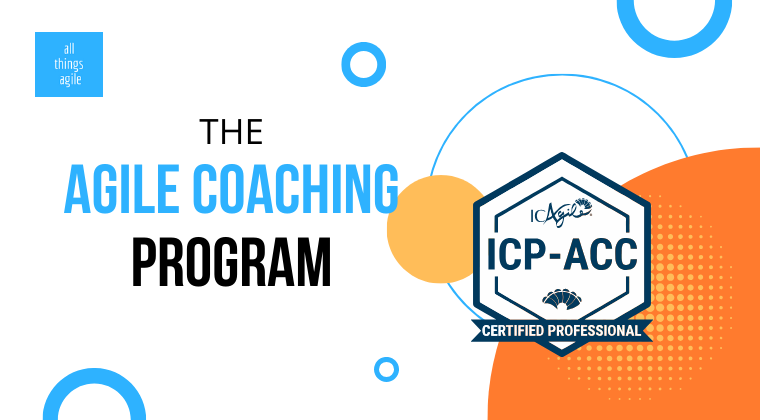
In 2018 I had the pleasure to present for the first time at the Agile Tour Montreal an event that is much celebrated by the francophone in Quebec: Agility in French. It is a massive event, where loads of insights are gathered every year. It is one of the biggest Agile Tours in the world and definitely the biggest in French.
What I presented with a colleague, in French, I will explore here in English, which is actually how I originally developed the presentation. It contains 3 parts:
- First part : demystifying performance as unattainable, as an objective in itself, performance as discipline and as a path.
- Second part: what does performance look like in practice? Who benefits from it?
- Third and final part: strategies to foster a high performing team.
So, making a 60 minutes conference a 6 minute read, let’s dive in!
What is performance?
I’ll tell you this much: performance not about skills, but about resilience and learning how to learn, at least if you are thinking as performance as something that can be sustained.
Yet when we talk about performance, most people gravitate towards the unachievable, that things that only gold medallists posses, like a mysterious talent. Well, if performing is basically the action or process of carrying out or accomplishing an action, task, or function, adding high to that just means carrying such tasks to the best level possible in your current ability.
Often times I see performance related to results. I like to think it is slightly different. Performance leads to results, but it is not the pursuit of it itself. Results also depend on the conditions around the team. That is to say that a team can be on a journey towards high performance and yet the system around them can be a hindrance.
Also, the framework will not guarantee performance. You can follow your favorite framework and not embody the values and mindset required for performance, which for me are around discipline and inspection. Discipline gets a really bad rep, but I cannot think of a team that can call themselves high performing that do not possess diligence. You can look at sports, at musicians, artists. Are there outstanding performances that result from a fluke? Rarely and they are not repeatable successes.
What is the impact of a high performing team?
I see the impact of high performance in 3 levels. Team and company impact are probably easy to imagine. I observed beyond that: individuals also transform themselves for and because of high performance.
Team Impact
Self-motivated, amplifying, collaborative, mission-oriented teams. Team members together:
- go from executing clear roles to redefining their roles as needed.
- do not just address a problem, but look for the underlying issue.
- share new ways of working.
- measure themselves so they can understand their progress.
- build up on each other’s contribution.
Accountability is high.
Company Impact
A learning company, adaptable, innovative. It is a company:
- which proposes and initiates changes in the market, because its teams are boiling with ideas.
- in which there is a very clear link between its strategy and projects carried out.
- in which absenteeism is low; morale is high.
Accountability is high.
Individual Impact
One becomes faster, things become simpler, one has no fear, one openly accepts the unknown.
A team member in a high performing team:
- goes from accepting feedback to welcoming feedback.
- goes from doing things in the proper way to devising better ways to do things.
- goes from mentee to mentor.
- goes from accepting ideas, to challenging them, to generating them.
Accountability is high.
Seven Strategies
You could have 3 strategies. Or 10. I am offering 7. Between reading and experimenting, this collection is what resonates with me and where I focused when learning how to be part of and how to support high performing teams.
1. Give your team a mission
High performing teams live for a common purpose, a shared vision. You cannot tell them what to do, but rather point to the north and let the get there. If we are to foster these types of teams, we support them in to generating collective goals.
2. Your team is not a cocktail party
So don’t invite everyone. The team composition is important and so is the membership stability. Think hard of who to invite, and better yet: exercise self-selection. People that want to work together tend work very well together.
3. Thinking processes are just as important as working processes
This is what I call “how to set ground rules without destroying creativity?”. Process and structure need to be set up, but what is the simplest, most effective way possible to do so? How can these elements be in the support of team development, rather than being prisons for the mind and the free agency that complex problem solving requires? How to create thinking sandbox for the team?
Scrum, Kanban and any other framework and tools and practices are not enough.
4. Define and measure performance
And adjust. In order to do that the apparent easiest part is to start with metrics. But key measurable metrics, defining boundaries for the autonomy of the team that matches their maturity, creating a space for sustainable growth is not so obvious. The marketable metrics we see in every agile blog can only help so much. Defining objectives and points of development is a highly customizable exercise.
And remember: for definition and measurement of performance… you cannot escape discipline.
5. Encourage vulnerability
We could go all in, Brene Brown style here, but the point I bring is simpler and before all that talk.
It is more about how many people in your team can say “I don’t know that” calmly and knowing that they have a safe space to admit their shortcomings and feel energized to try better next time? How many of the team members give each other feedback? Do they accept feedback? Do the seek feedback? Empathy and Growth Mindset, for me, is what is on the other side of vulnerability. It is of a very high payoff!
6. Agree to disagree
Conflict is positive! Artificial harmony is one of the 5 dysfunctions of a team, very well described by Patrick Lencioni. When a team disagrees we are seeing diversity and trust in action, because people bring in their unique points of view fearlessly and respectfully. Constant challenge and a little lack of comfort are key ingredients, just enough to keep the team progressing.
7. Don’t rely in positional authority
Leadership always exist and is always at play, yet sometimes it cannot be easily detected. The accepted leadership of a more knowledgeable peer might be what matters in one moment. Change the context and the leadership now shifts to another colleague. Leadership in high performance teams is exercised by everybody at different points in time, and is actually a great motor of collaboration.
Leadership is not management. Hierarchical positions are management. Hierarchical positions do not create leadership.
Have you ever seen one?
Balance pressure and performance and you might be able to witness many. High performing teams are not unicorns. They are not also made of a gang of PhDs. They fight sometimes, and that is because they all care. They laugh a lot together. They are creative and in full expression of themselves. Companies that accept and celebrate the humanity of their employees are the ones who get to benefit from the best teams!
Do you lead agile teams?

If you are looking to move beyond single team facilitation, to coach across all levels of an organization, including management layers, this is the program for you.
The Agile Coaching Program It is suited to people looking to facilitate Agile change, guide aspiring Scrum Masters and other Agile Team Facilitators, and those looking to help their organizations truly embrace Agile.



